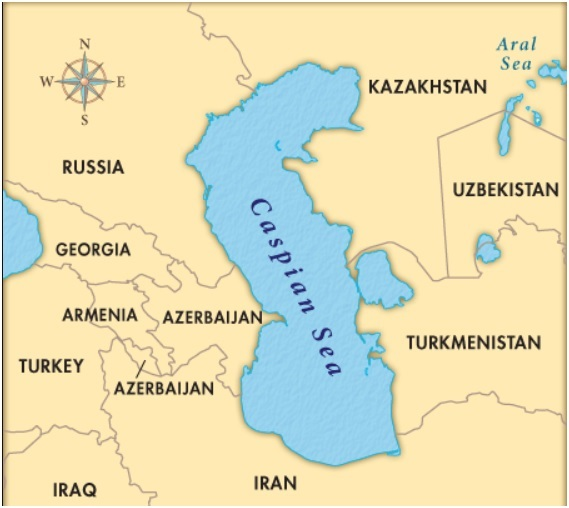Caspian Sea: World’s Largest Inland Waterbody Faces Challenges
Why in the News?
The Caspian Sea, a unique landlocked body of water, has been shrinking since the mid-1990s, with this decline accelerating since 2005. This trend raises environmental concerns, impacting regional ecosystems and biodiversity.
About Caspian Sea:Geography and Location
- The Caspian Sea, covering approximately 386,400 sq. km, is the largest inland water body globally, positioned between Asia and Europe.
- Surrounded by Russia and Azerbaijan in the west, Kazakhstan and Turkmenistan in the north and east, and Iran in the south, it lies east of the Caucasus Mountains and west of Central Asia’s steppes.
- Although termed a “sea,” it is technically a landlocked lake, as it has no direct connection to the ocean.
Historical and Geological Significance:
- The Caspian Sea’s origins trace back 5 million years to the ancient Paratethys Sea, becoming isolated due to tectonic activity and sea-level changes.
- Its seafloor contains oceanic basalt, distinguishing it from typical lakes and making its geological profile unique.
- The water composition varies significantly, with northern sections nearly fresh and southern parts much saltier, holding an average salinity level one-third that of the ocean.
Environmental Concerns and River Inflows:
- Major rivers, including the Volga, Ural, and Terek, flow into the Caspian from the north, maintaining its water levels.
- Since the mid-1990s, the Caspian Sea has been shrinking, with this trend intensifying after 2005, posing serious environmental and ecological threats to surrounding regions.
- The shrinking water levels impact local ecosystems, necessitating conservation measures to protect the unique biodiversity and regional balance.
Sources Referred:
PIB, The Hindu, Indian Express, Hindustan Times





